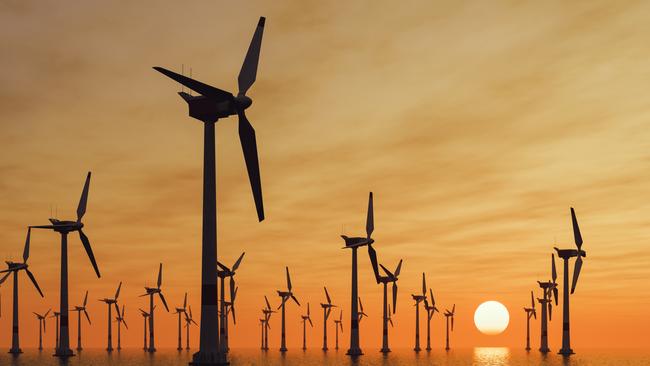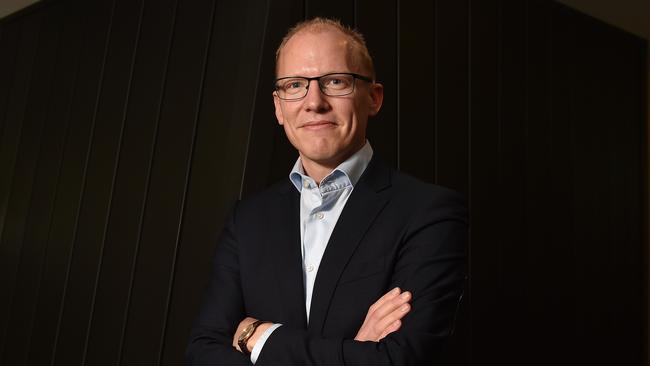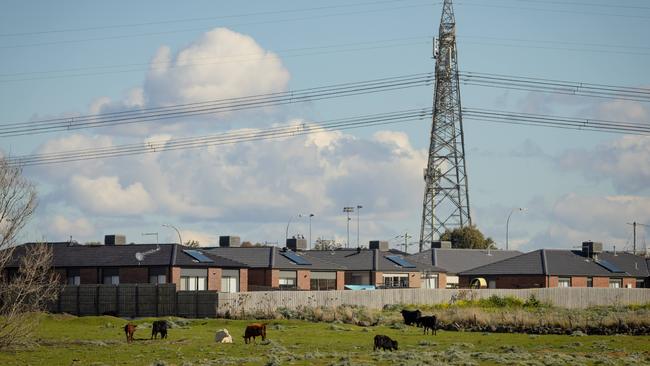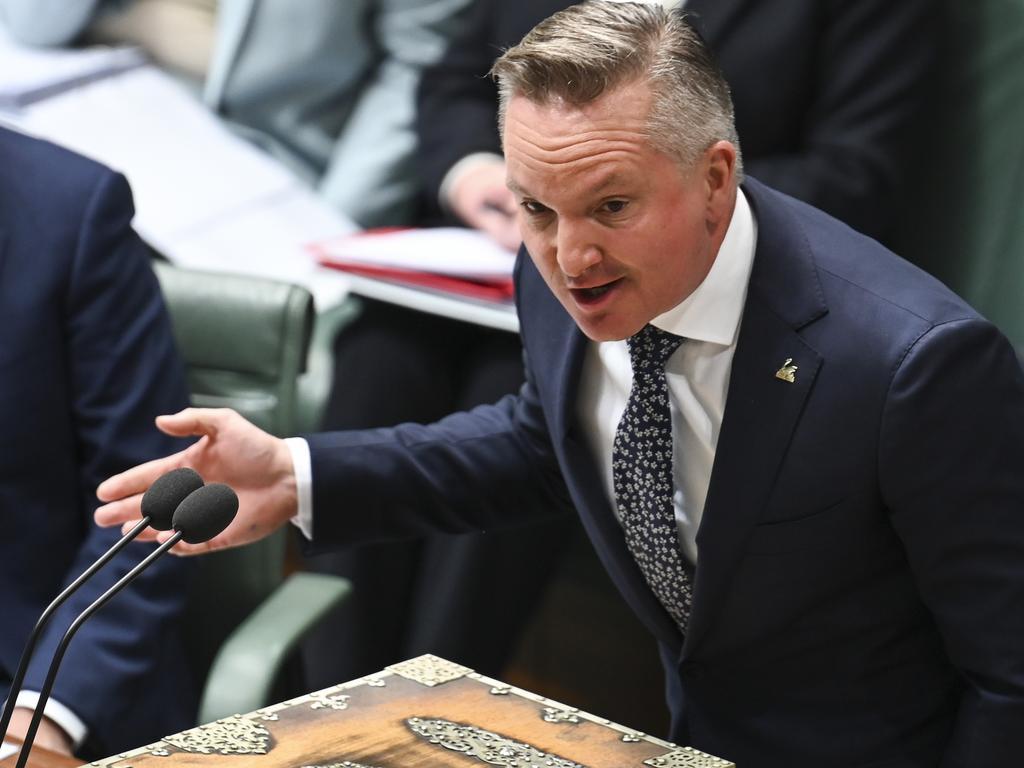Australia on course for a decade of energy instability without urgent action, operator warns
The electricity network is on course for a demand crunch – with SA and Victoria worst hit – and urgent action is needed to prevent possible blackouts and higher bills, a report warns.

Australia faces an increased risk of blackouts in Victoria and South Australia this summer with delays in delivering new generation and transmission sparking an urgent call from the market operator to plug the supply shortage or face a decade where power supplies cannot be guaranteed.
The stark forecast underscores growing alarm within the Australian Energy Market Operator and piles new pressure on the Albanese government to deliver its ambitious pledge to more than double the level of renewable energy in the system to 82 per cent by 2030 that it said would slash $275 a year from household power bills within years.
AEMO has incrementally elevated its warnings about the pace of building new renewable energy to replace fossil fuels within its annual report known as the Energy Statement of Opportunities (ESOO) – which is a blueprint that shapes government policy.
But the 2023 report warns the country’s National Electricity Market is precariously placed and “imminent and urgent” investment must be delivered to safeguard the system.
Daniel Westerman, chief executive of AEMO, said the situation is increasingly urgent and warnings must be heeded.
“The story for Australia is becoming more and more clear, but also more and more urgent,” Mr Westerman told The Australian.

“Quite simply, Australia‘s energy transition is happening at pace. Our coal fired power stations are closing down at the same time as demand for electricity is increasing and without urgent and ongoing investment in new sources of electricity, and the transmission that we need to connect it to consumers – there are significant risks to reliability.”
If the investment in new renewable energy and storage is not delivered, AEMO said the country’s electricity market will face periods when reliable electricity supply would be at risk.
Even if Australia avoids blackouts, supply shortfalls will drive higher wholesale prices that eventually flow through to households and businesses.
Australia has already endured two consecutive years of price rises about 20 per cent, straining households and businesses already grappling with high inflation and soaring interest rates.
As foreshadowed by The Australian earlier this month, the first danger period is expected to emerge as soon as this summer, AEMO warned, with Victoria and South Australia facing electricity supply uncertainty.
Australia is expected to be hit by an El Nino weather pattern that is expected to drive up demand. But The energy market operator said the reliability of the state’s coal and gas generators were “historically poor” last year and generators have advised it that reliability is unlikely to materially improve.
While South Australia and Victoria face the biggest imminent threat, all the remaining states in the National Electricity Market will face periods when electricity supply cannot be assured over the coming decade, with Tasmania the lone exception.
AEMO said NSW faces shortfalls in generation from 2025 when Origin Energy’s Eraring coal power station is set to retire, while Queensland will face uncertain supply periods around 2030.

The NSW government is grappling with how to safeguard certainty of supply without underwriting the facility with taxpayer funding, which would likely be significant as Eraring is expected to be unprofitable as soon as next year.
To mitigate the threat, AEMO said Australia must see the pipeline of renewable energy and storage projects materialise into commission.
Nearly 250GW of renewable energy projects have been announced, AEMO said, but only 9.9GW has been committed to which is well down on the amount needed to replace coal powered generation.
Coal is still the dominant source of electricity in Australia, with the 20GW of capacity accounting for about 60 per cent of the country’s power. To replace coal, however, Australia will need to build significantly more capacity than the amount of coal already in the system due to the intermittent source of renewable energy.
Much of the hesitancy of renewable energy developers to commit, AEMO said, is due to uncertainty over transmission – which has emerged as the biggest bottleneck to Australia’s energy transition.
About 10,000km of new lines must be built before 2030, but their development has been hampered by funding constraints and community opposition.
Without certainty of being able to connect to the grid, developers have remained on the sidelines
The federal government has said its $20bn Rewiring the Nation, which offers cheap loans and concessional finance to transmission developers, will break the bottleneck.
Federal Energy Minister Chris Bowen said the government was delivering and the AEMO warning was a consequence of previous inaction by the former Coalition government.
“After a decade of energy policy chaos, the Albanese Government is implementing overdue policy reform to deliver a cheaper, cleaner, more reliable energy system,” said Mr Bowen.
“The latest ESOO confirms our federal government programs, including Rewiring the Nation and the Capacity Investment Scheme, will improve the strength of the grid and reduce reliability risks. While the former government put its head in the sand and ignored repeated calls to bring on new supply and transmission, we are acting to ensure Australia’s energy grid is fit-for-purpose in the 21st century.”
Mr Bowen seized on the AEMO’s forecast about the impact of the federal government and state policies should they deliver the outcomes as advertised and on schedule.
AEMO said should transmission and the generation and storage capacity be incentivised by the government policies, Australia would avoid any periods when electricity supplies were in question. The lone exception was in Victoria in 2028 when EnergyAustralia’s Yallourn coal power station is retired.
However, Australia has a long history of delays in critical energy infrastructure and policies to hasten transmission lines have so far failed to deliver much progress – demonstrating the precarious nature of the country’s transition.





To join the conversation, please log in. Don't have an account? Register
Join the conversation, you are commenting as Logout